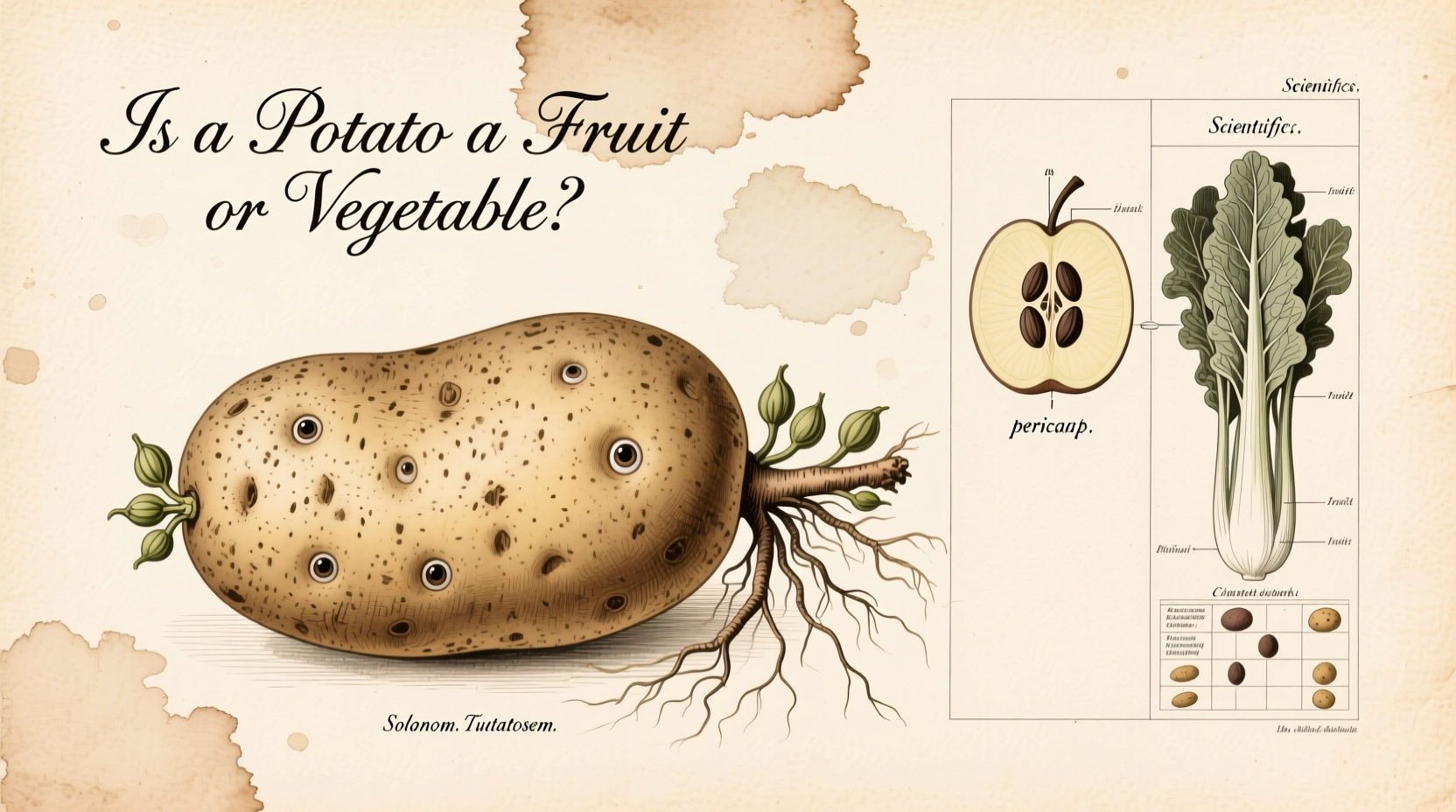Short answer: Potatoes are botanically classified as vegetables—specifically tubers—not fruits. While fruits develop from the flowering part of a plant and contain seeds, potatoes grow underground as modified stems storing nutrients for the plant.
Ever found yourself debating whether that humble spud on your plate qualifies as a fruit or vegetable? You're not alone. This common kitchen confusion stems from the gap between scientific classification and everyday culinary terms. Let's clear up this starchy mystery once and for all with evidence-based clarity.
Botanical Reality: Why Potatoes Aren't Fruits
From a strict botanical perspective, fruits develop from the ovary of a flowering plant and contain seeds. Think apples, tomatoes, or cucumbers—all technically fruits because they house seeds within their fleshy tissue. Potatoes, however, form as underground stem modifications called tubers. These swollen parts of the plant's stolon (a horizontal stem) store energy for the plant's survival, not reproduction.
The United States Department of Agriculture (USDA) confirms this classification in their FoodData Central database, listing potatoes under the vegetable group. Cornell University's College of Agriculture emphasizes that Solanum tuberosum (the potato plant) produces actual fruits—small green berries above ground—but these are toxic and never consumed. The edible part we call “potato” is strictly a vegetable by botanical standards.
Where the Confusion Comes From
The fruit-vegetable mix-up often occurs because:
- Culinary vs. scientific definitions - Chefs classify based on taste and usage (sweet = fruit, savory = vegetable)
- Tomato precedent - Since tomatoes are botanically fruits but culinarily vegetables, people assume similar exceptions exist
- Seed misconception - Many believe “no seeds = not a fruit”, but some fruits like bananas are seedless through cultivation
| Classification Type | Fruit Characteristics | Vegetable Characteristics |
|---|---|---|
| Botanical | Develops from flower ovary, contains seeds | Other plant parts: roots, stems, leaves |
| Culinary | Sweet flavor, often eaten raw/desserts | Savory flavor, typically cooked as side dishes |
| Where Potatoes Fit | ❌ No relation to flower development | ✅ Tubers (modified stems) |
Potato Classification Timeline: From Andes to Global Staple
Understanding potatoes' journey helps explain their classification:
- 8000 BCE - First domesticated in Andean region (modern-day Peru/Bolivia) as Solanum tuberosum
- 1530s - Spanish conquistadors bring potatoes to Europe, initially grown as ornamental plants
- 1748 - French scientist Antoine-Augustin Parmentier demonstrates potato's nutritional value, shifting perception from “poisonous” to food crop
- 1840s - USDA begins classifying potatoes under vegetable groups in agricultural reports
- 1980s - Botanical consensus solidifies potatoes as tubers (modified stems), distinct from root vegetables like carrots
When Classification Actually Matters
For most home cooks, whether potatoes are fruits or vegetables won't change your mashed potato recipe. But the distinction becomes crucial in specific scenarios:
- Gardening - Knowing potatoes are tubers (not roots) affects planting depth and soil requirements
- Nutrition planning - Potatoes provide complex carbs like other vegetables, not simple sugars like most fruits
- Food safety - Green potato skins contain solanine (a toxic compound), unlike fruit skins which are generally safe
- Crop rotation - As nightshade family members, potatoes require different rotation schedules than fruit-bearing plants
Practical Implications for Your Kitchen
While the scientific classification might seem academic, it impacts real cooking decisions:
- Storage - Unlike most fruits that ripen after picking, potatoes should be stored in cool, dark places to prevent sprouting
- Cooking methods - Their starch composition (typical of vegetables) makes them ideal for boiling, roasting, and frying—unlike fruits which often require sugar balancing
- Nutritional pairing - Combine with other vegetables for balanced meals, as their vitamin C and potassium profile complements leafy greens better than fruits

Common Misconceptions Debunked
"If tomatoes are fruits, why aren't potatoes?" - Tomatoes develop from flowers and contain seeds (making them botanical fruits), while potatoes are stem growths with no seed connection.
"Aren't sweet potatoes different?" - Despite the name, sweet potatoes are also vegetables (storage roots), though from a different plant family than regular potatoes.
"What about potato 'seeds'?" - Those small green berries on potato plants contain actual seeds, but they're toxic and never used for cultivation. Farmers plant "seed potatoes" (tuber pieces), not true seeds.
Why This Classification Benefits You
Understanding potatoes' true nature helps you:
- Make better storage decisions (no refrigeration needed like many fruits)
- Choose appropriate cooking techniques (high-heat methods work best with starchy vegetables)
- Avoid food safety risks (recognizing green spots indicate solanine buildup)
- Plan more balanced meals based on actual nutritional profiles











 浙公网安备
33010002000092号
浙公网安备
33010002000092号 浙B2-20120091-4
浙B2-20120091-4